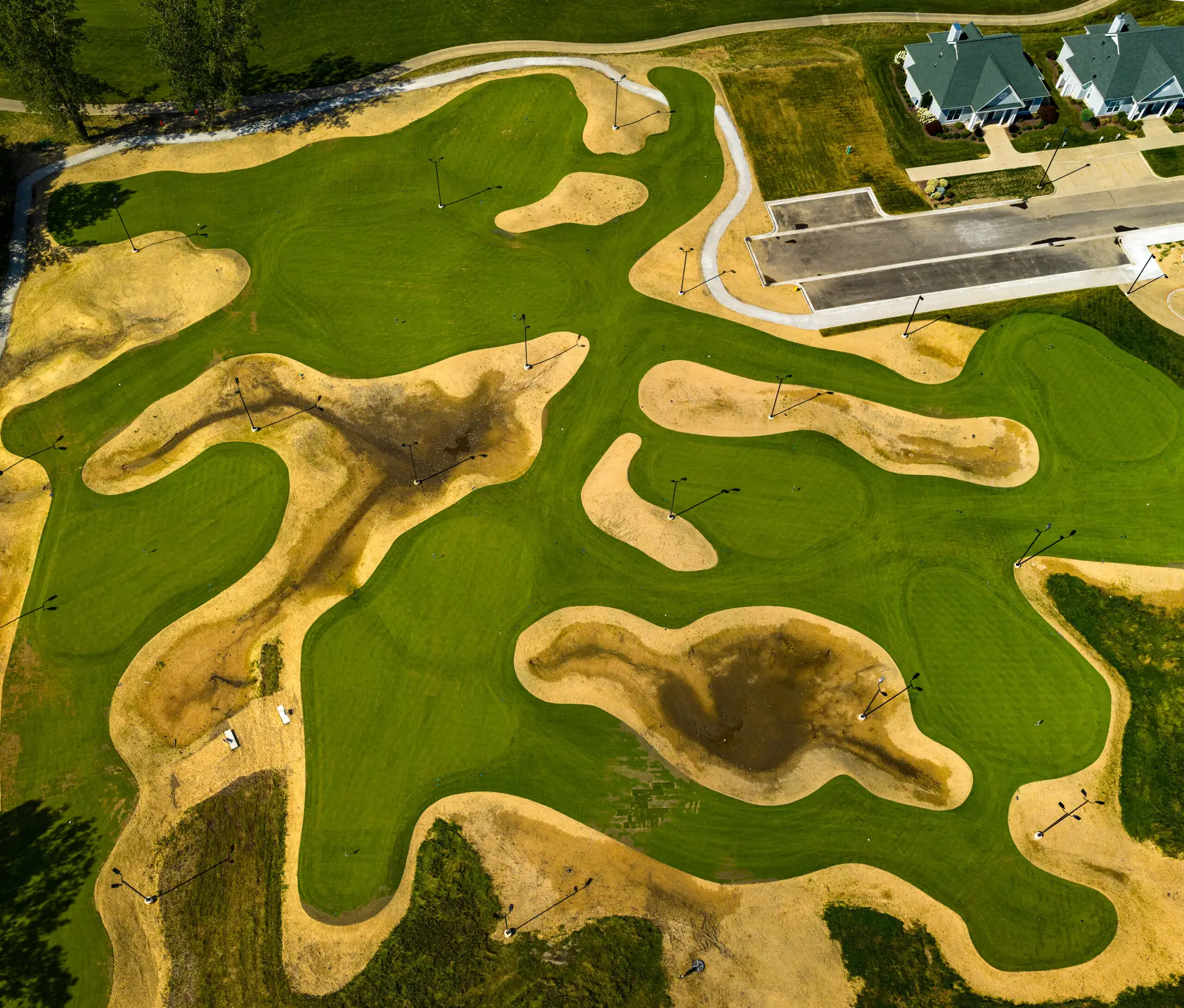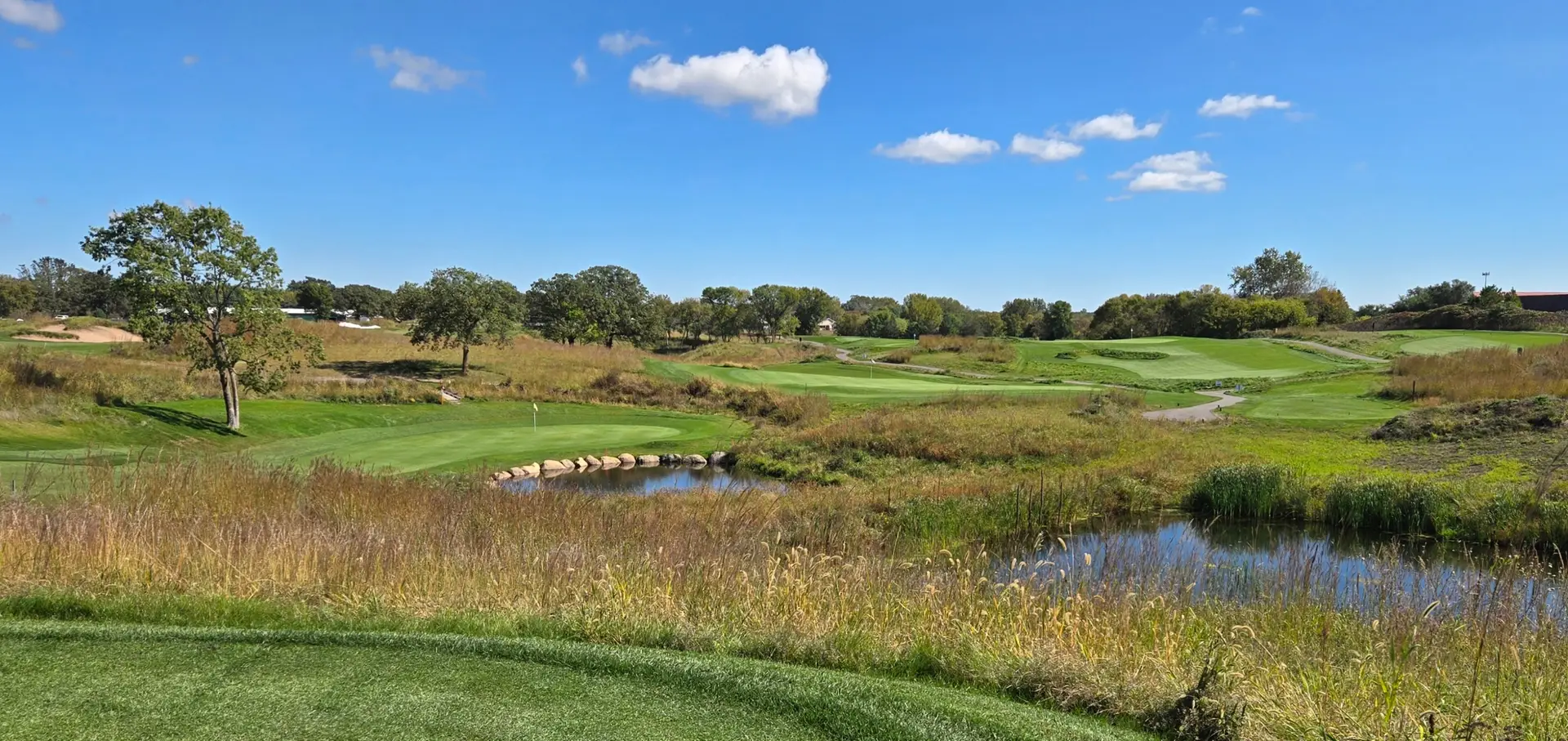It’s been close to a decade since Gil Hanse and Jim Wagner designed The Cradle at Pinehurst Resort. In that time, the 9-hole short course, which covers almost 10 acres and presents 789 yards teeming with camaraderie and flip-of-a-wedge fun, has served as the inspiration for plenty more of its kind.
Here, we take a closer look at five new “shorties” that have opened within the past year.
Doon Brae at Boyne Highlands—Harbor Springs, Mich.
Forget what you’ve heard about the Donald Ross Memorial course at Boyne Highlands. When it comes to the resort’s replication efforts, the newest course at the property—built into the side of a ski hill, no less—knocks the ball out of the proverbial park. Composed of holes that play as short as 57 yards and as long as 134, the course features a handful of stacked-wall bunkers and green complexes modeled after some of the most recognizable in the world—North Berwick’s Redan, Royal Troon’s Postage Stamp, and Eden from the Old Course at St. Andrews, among others. With most holes playing either across the ski slope or downhill, the course feels rooted in dynamic topography but it’s easy to play. That was another goal of its designer, Ray Hearn. “I wanted to make sure we were creating something fun and unique without being a difficult walk,” he says.

The Shoe at Golden Horseshoe Golf Club—Williamsburg, Va.
Given Golden Horseshoe’s location in Colonial Williamsburg, it was only appropriate that its new short course, The Shoe, opened for play the week of July 4th. Equally noteworthy, The Shoe represents the first new course built at the resort in more than three decades. Designed by Rees Jones, the 760-yard-long, 9-hole routing is situated on a piece of land with significant elevation change, which makes for a varied round where no two holes look or play the same. (The course can also play shorter from the green tees, stretching to just 573 yards.) Although they make for dynamic golf holes, the site’s steep hills also make for a challenging walk, especially in the summer when both the temperature and the dew point reach their zenith, which is likely why Jones laid out the course to accommodate a cart path. (That said, it is odd to see a cart path on a short course.) Minor shortcomings aside, The Shoe is a balanced mix of one-shotters, where some are gentle handshakes and others demand your utmost attention and accuracy.

Cliffhangers at Big Cedar Lodge—Ridgedale, Mo.
Johnny Morris has always been a hands-on golf course developer. You can see it in most of the layouts at Big Cedar Lodge. An excavated sinkhole here. A dramatic waterfall there. An expanse of limestone rock exposed to create a dynamic contrast to the verdant fairways and greens (assuming, of course, the professional architects he hired were amenable to that idea). These features always made you wonder, what would a golf course look like if Johnny was in complete control?
The 18 holes at Cliffhangers provide that answer. The par-3 course is the handiwork of Morris and his son, J.P., and it presents several drop shots plus lots of water and sand. Although a couple of holes allow for putting off the tee, utilizing the ground game isn’t an option here. In fact, half of the holes introduce forced carries, including the 3rd, named “Lion’s Den,” which positions golfers inside the mouth of a cave and requires them to hit shots through cascades of water.

Wee Course at Harbor Shores Resort—Benton Harbor, Mich.
The new lit short course at Harbor Shores in southwestern Michigan embraces its location—each of its greens is modeled after the famous holes on the resort’s eponymous championship course—a Jack Nicklaus Signature Design that hosted the Senior PGA Championship six times. Incidentally, the Wee Course’s designer, Colin Montgomerie, hoisted the Alfred S. Bourne Trophy at Harbor Shores in 2014.
A true pitch-and-putt layout, the 9-hole Wee Course plays no more than 500 yards in length, though forward tees shorten that distance to just 275 yards, making every hole more approachable for beginners. Moreover, the course is structured to be kid-friendly—children 12 and under with an adult play for free, while the green fees for juniors (ages 13 to 17) playing with an adult is capped at $20. “Having seen how short courses bring people together around the world, especially in Scotland, I know this course will create the same sense of community here,” Montgomerie says. “It’s an investment in both the game and the community that will pay dividends for generations.”

Little Darling at Alexandria Golf Club—Alexandria, Minn.
Over the last few years, as golf’s popularity boomed, so too did Alexandria Golf Club’s junior golf program—to the point that it was in desperate need of a venue where those newcomers to the game could play. Fortunately, the club owned about 55 acres of undeveloped ex-farmland and, with the help of one of the club’s members, 1996 Open Champion Tom Lehman, it began the process of converting those rolling hills into an accessible (and approachable) short course.
Little Darling, which opened this summer, was lauded immediately for its multiple tee boxes, which in some cases drastically alters how the nine par-3 holes play. The 2nd, for example, asks players who tee it up from the back to hit a slightly uphill shot over wetlands to a large, punchbowl-like green set 165 yards away. Tee it up from the forward tee box, however, and you’re left with an easier shot that avoids the wetlands altogether.

What is your favorite short course?





